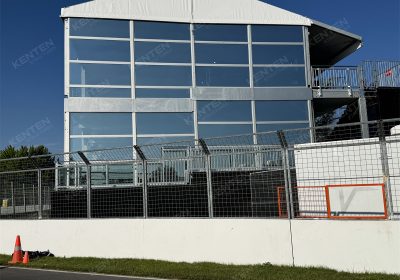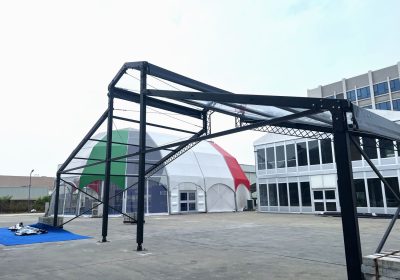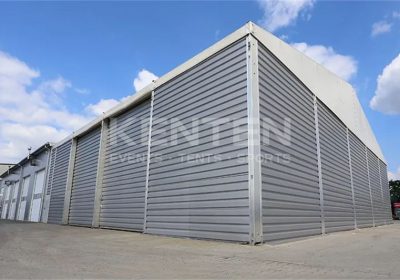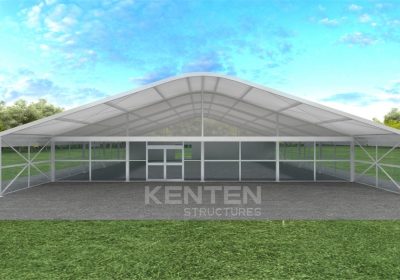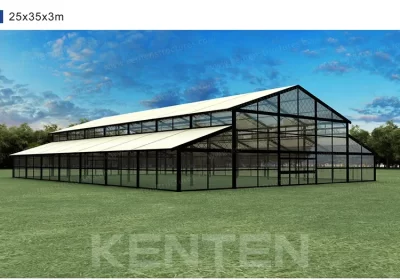What factors affect the cost of building a warehouse?
The main factors in warehouse construction costs include:
Land Options
The cost of purchasing land for a warehouse can significantly impact the budget. Land prices fluctuate dramatically depending on location, with urban industrial sites often demanding higher land values than rural areas. Not only is the base land cost per square foot for a warehouse important, but the size of the parcel must also be large enough to accommodate the required warehouse space.
Design and Planning
The design of a warehouse directly affects its functionality and operational efficiency. Architectural planning needs to balance the required function, flow, space allocation and ambiance within budgetary constraints. Engineering costs also come into play during the structural design process. Additionally, warehouse costs are incurred when obtaining necessary permits and conducting required inspections and reviews prior to breaking ground.
Construction Materials
Building materials account for a significant portion of warehouse construction costs. Concrete tilt-up slabs and steel framing are common in warehouse projects due to durability and spanning capabilities. Insulation, roofing materials, doors/windows and finishes must also be included in the budget. Typically, low-cost buildings utilize basic wear-resistant finishes, while more complex warehouses utilize higher levels of fire protection, controlled warehouse environments, and offices, among other features.
Building Construction Staff
A major cost driver, construction labor varies by type, need and geographic area. Labor shortages can occur during peak periods of activity, translating into higher costs. The complexity of warehouse projects can also impact labor budgets.
Utilities and Infrastructure
Warehouses cannot operate without basic utilities and infrastructure, including electricity, water, sewer/septic, data connections, telephone lines, storm drain systems, outdoor lighting, fire sprinklers, etc. Materials, equipment, excavation, permits and installation of these services must be included in the project estimate.
Warehouse Size Impacts Costs
The cost impact of different warehouse sizes:
Warehouse Size (sq. ft.), Cost per sq. ft. Estimated Total Cost Range
1,000 square feet | $100 – $200 | $100,000-$200,000
2,000 square feet | $90 – $180 | $180,000-$360,000
5000 square feet | $80 – $150 | $400,000-$750,000
10,000 square feet | $70 – $120 | $700,000-$1,200,000
25,000 square feet | $60 – $110 | $1,500,000 – $2,750,000
50,000 square feet | $50 – $100 | $2,500,000 – $5,000,000
75,000 square feet | $48 – $95 | $3,600,000 – $7,125,000
100,000 square feet | $45 – $90 | $4,500,000-$9,000,000
200,000 square feet | $40 – $80 | $8,000,000 – $16,000,000
300,000 square feet | $38 – $75 | $11,400,000 – $22,500,000
500,000 square feet | $35 – $70 | $17,500,000 – $35,000,000
1,000,000 square feet | $30 – $65 | $30,000,000 – $65,000,000
Construction Options: Warehouses & Temporary Warehouse Buildings
Permanent Warehouse Building
Initial Construction/Setup Costs $2,500,000 – $5,000,000 (50,000 square feet)
Cost per square foot of warehouse $50 – $100
Annual Maintenance Costs $100,000 – $250,000 (or $2 – $5 per square foot)
Lifespan 30 – 50 years

Temporary Warehouse Tents
Initial Construction/Setup Costs 50,000 square feet $1,000,000 – $2,500,000
Warehouse cost per square foot $20 – $50
Annual Maintenance Cost $50,000 – $150,000 (or $1 – $3 per square foot)
Lifespan 10 – 20 years

Permanent Warehouses Benefits
Long lifespan – Permanent warehouses, using high-quality materials and proper maintenance, typically last 50 years or more, much longer than temporary structures. This extensive lifecycle allows companies to maximize their return on investment.
Fully customizable-Permanent warehouses can be fully customized to a company’s exact specifications, from layout to materials to lighting systems.
Over 50 Years of Extended Use-Permanent warehouses are best suited for distribution needs over 5 years and require tailored, maximized productivity warehouse space. They accommodate growth, provide security for critical inventory assets, and provide brand quality for customer-facing locations.
Temporary Warehouse Tent Benefits
Rapid Deployment – Prefabricated temporary warehouse components can be installed in facilities faster than ground-up buildings, often in a matter of weeks or months. This supports emergency storage needs or short-term expansion plans.
Reduced Upfront Warehouse Costs – Eliminating aspects such as deep foundations and customized materials greatly reduces the initial capital investment requirements for temporary warehouses versus permanent facilities.
Short-term flexibility-Some temporary warehouses feature modular and portable designs that can be reconfigured or relocated in the short term as business needs change. This helps with temporary or seasonal inventory surges.
Expandable – Several modular temporary warehouse frameworks support incremental expansion to cost-effectively add more storage space within a limited timeframe.
Temporary warehouse structures are ideal for immediate but short-term storage needs, testing new geographic locations or warehouse concepts, temporary buildings during phased permanent warehouse construction, and basic protection of inventory from weather or theft.
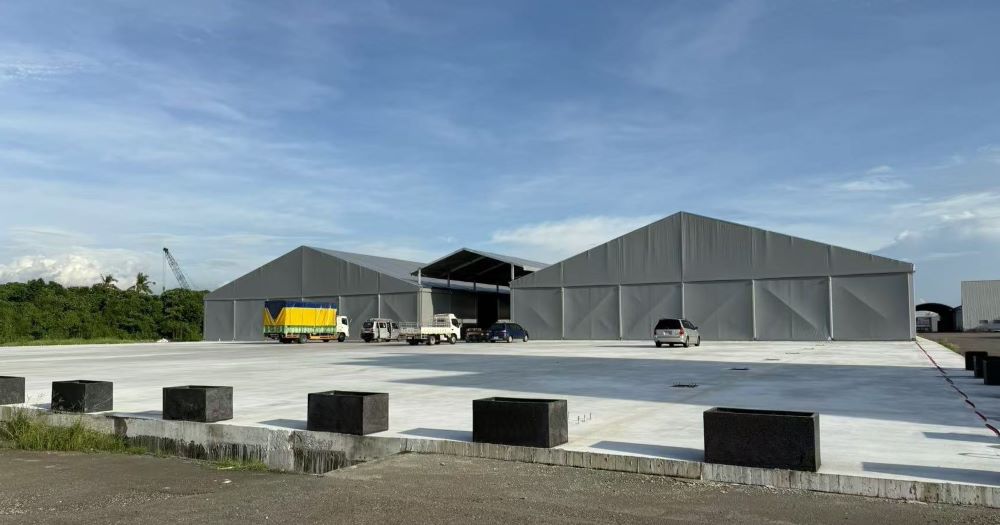
Consult us for help on how to choose a permanent or temporary facility.
To Summarize
Temporary warehouse tents offer a lower cost alternative, with costs ranging from $1,000,000 to $2,500,000 for a 50,000 square foot temporary structure, substantially less than permanent warehouses, which range from $2,500,000 to $5,000,000 for permanent warehouses of the same size.
The cost of building a warehouse is a complex calculation involving a variety of factors, from land acquisition and building materials to labor costs and the intended use of the facility. By understanding these components and carefully considering your business needs, you can make an informed decision between a permanent warehouse and a temporary structure. Whichever option you choose, investing in warehouse space is a strategic move that can improve supply chain efficiency and support your business growth.

